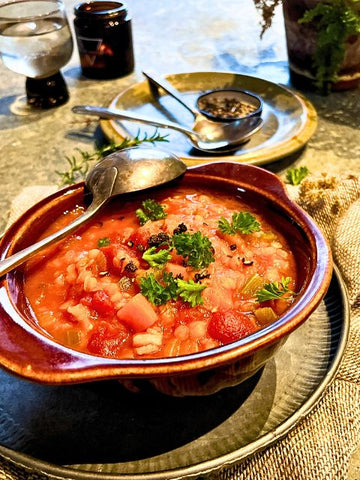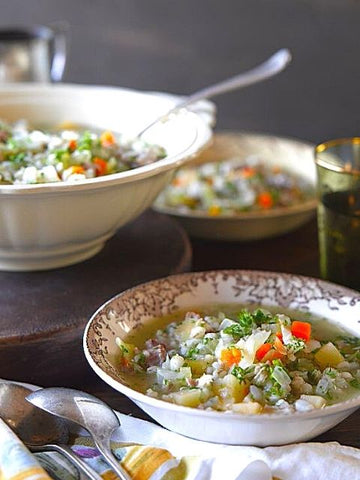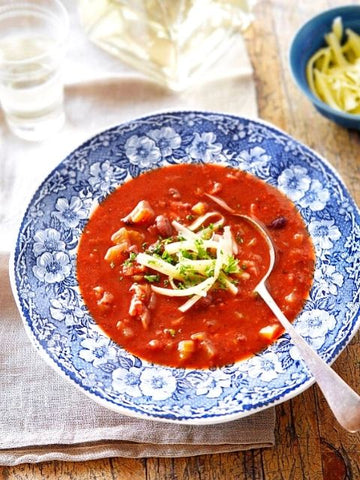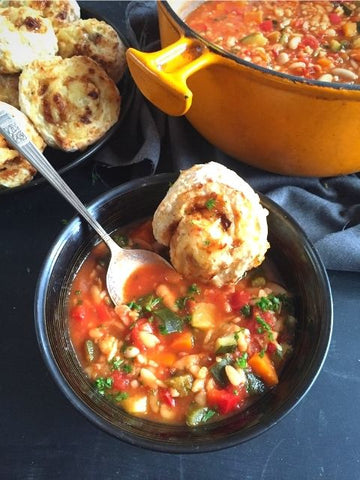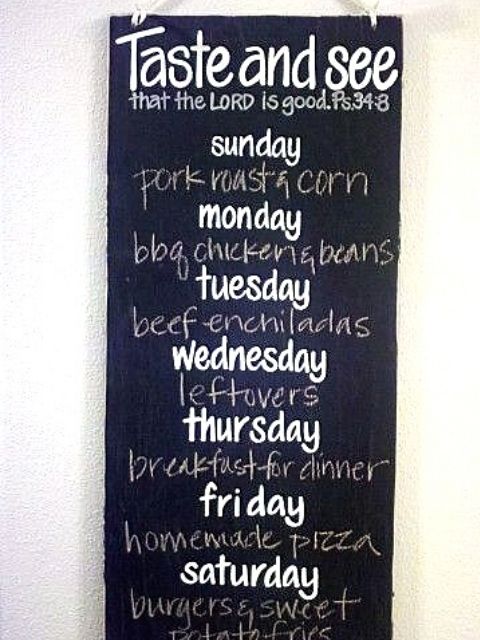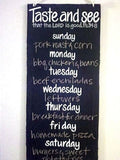Making a Menu Plan will Save you Serious $$$
For busy people wanting to watch what they spend, the menu plan is an essential household management strategy. Often the hardest part of feeding everyone everyday is actually just deciding what to make. There are either too many choices or not enough, and the last thing any of us needs at the end of the day is a hard decision.
Menu planning is the easiest way to take the stress out of the daily dinner dilemma. What have I got? What will everyone eat? How much time do I have? What happened to the meat I thought I’d defrosted?
Whether you are a single person household, flat mates, a couple, or a family, the menu plan is the surest way to guarantee something not just edible but actually palatable makes it onto the plate each night. That little bit of thinking ahead can save you a bundle in last minute takeaways, and emergency dashes to the supermarket. It will also allow you to factor in or use up any stock piles in the pantry or fridge so you have less waste.
I personally never know what I fancy for dinner, and when I ask Rich he throws it back on to me without skipping a beat saying– “just make something easy”. The thing is it would be easy if he’d simply tell me what to make!
The Menu plan is a stress buster on so many levels, it helps you to reign in the grocery spend by reducing over-stocking and eliminates the time wasted doing expensive emergency dashes to the supermarket because you are missing a vital ingredient you were sure you already had.
The plan can accommodate supermarket specials and seasonal variations and the dishes you choose can be selected to suit the age and stage of the household. The menu plan also makes it much more easy and achievable to cook double batches, squeeze in some baking or get a head start on tomorrow’s meal when today’s is under control.
If you want to spend less, be smart and plan your meals before you need them. Here’s how.
Getting set up:
- 11 recipes. That’s about how many the average household can manage to stock ingredients for, remember how to make, and coerce the family to eat. Households tend to shop and stock for all 11 of their regular dishes even though they are actually only going to make 7 each week.
- What does your repertoire of 11 dishes consist of, and how much do those dishes cost to make?
- Make a list the dishes that you most frequently eat, include breakfasts, lunches and snacks in the list. Then roughly work out which are your most expensive dishes and why.
We frequently know in advance which are our busiest days – in your menu plan, prepare for those days. When we are busy sports training, parent interviews or the late shift… all conspire against us and make quick fix meals from the supermarket or takeaway seem very appealing.
Plan to include some dishes that are quick to make for those kinds of days such as risotto and fresh veg, or spicy meatballs in pita bread with salad, or a stir fry and rice.
Fast food from home is much cheaper and healthier than fast food from a store.
Alternatively you could just make a double batch of something the night before and use it again the following day. Or break out the slow cooker and have dinner waiting for you when you tumble in the door. This is a great option when you have flatmates or teenagers coming and going at all sorts of different times. A Big batch of soup and some rolls will give everyone a fast filling meal dirt cheap.
Things to consider when planning your weeks menu are:
- How many people are in for dinner on each given day?
- What time does it need to be ready before people shoot out for evening activities?
- What do we have in stock already?
- What is in season?
- What will everyone be prepared to eat? - (not what they like, if we only ate what we actually liked I personally would subsist on potato crisps, cake, and fillet of beef).
When you have a rough outline of the kinds of dishes you intend to make, look at the overall menu.
- How many meat meals are there?
- Can you afford those dishes?
- Are you including a wide variety of foods?
Review the menu plan regularly, are there small changes you can make that will save you money? Can you substitute one family favourite with another that is less expensive to make? Can you use a cheaper cut of meat or make it go further with extra veg
What kind of plan will work best for your household? You can plan a weekly, fortnightly or monthly menu.
Think about what is in season, what is on special and what special events you need to factor in (entertaining, sleep over’s, birthdays…)
The menu plan can be as simple as dinners for every night of the week, or can go as far as all meals and snacks.
Take into account what day is your regular shopping day – it’s likely that the day before shopping day, you will be getting low on fresh produce so factor that in – a stir fry might not be possible but cottage pie with veg from the freezer might.
Choose main course meals with the cost of the key ingredients in mind rather than out of habit.
Reduce your reliance on ready made kid’s meals. If you are feeding babies and toddlers, choose recipes that can be served pureed for baby or chopped for toddlers, as well as appealing to adults. Leftover’s can then be frozen as future kid’s meals for when you are having something unsuitable for them. If your kids are picky then you might want to read the section on how to fix a picky eater.
It’s easy to assume that dinner is the most expensive meal of the day but a household of teenagers or flat mates can hoover up an alarming amount of Cocoa pops, and fancy toast over a week of breakfasts.
Cornflakes, Ricies, weet bix and oats are an economical choice for everyday, keep treat cereals as treats.
Lunches, snacks and pre packaged bars can cost loads, and drinks – juice, fizzy, coffee, wine, and beer all slip down without drawing a lot of attention.
You may find that “adjusting” the menu subtly is the way to go. Split fancy cereal with a cheaper brand or only have it once a week and let the porridge and weetbix make a comeback, maybe save the juice and fizzy for weekends.
A few minutes spent spreading stuff on slices of bread for the lunch box, instead of snatching a few packets of snacks will make a big difference to the grocery budget within a couple of months.
The menu plan lets everyone know what they can have when. Stick it up where everyone can see it.
Record what you spend each week and determine which weeks menu’s were the tastiest, healthiest and most economical, and then if you want to take it a step further you can combine them to create a master menu.






